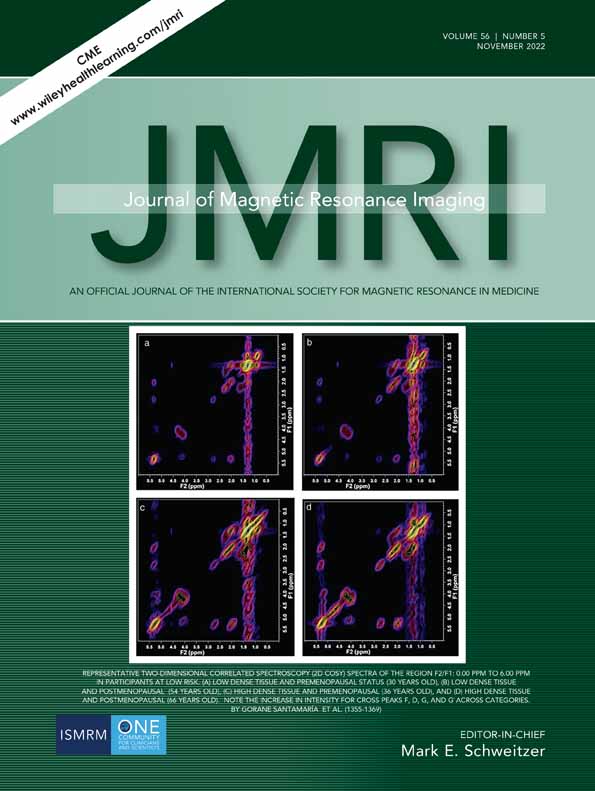Longitudinal Changes in Global Cerebral Blood Flow in Cognitively Normal Older Adults: A Phase-Contrast MRI Study
Abstract
Background
Characterization of blood supply changes in older individuals is important in understanding brain aging and diseases. However, prior studies largely focused on cross-sectional design, thus change in cerebral blood flow (CBF) could not be assessed on an individual level.
Purpose
To evaluate longitudinal short-term changes in global CBF in cognitively normal older adults.
Study Type
Prospective, longitudinal, and cohort.
Population
One-hundred twenty-seven cognitive-normal participants (mean age 69 ± 7 years, 47 males) underwent serial MRI with an average follow-up time of 2.1 years.
Field Strength/Sequence
3 T phase-contrast (PC), three-dimensional magnetization-prepared-rapid-acquisition-of-gradient-echo (MPRAGE) and fluid-attenuated inversion recovery (FLAIR) MRI.
Assessment
Total CBF was measured with PC MRI allowing assessment of quantitative flow in four major feeding arteries by a trained radiologist with >3 years' experience (O.K.). Brain volume was obtained from MPRAGE MRI and measured by T1-MultiAtlas MRICloud tool. The ratio between total CBF and brain volume yielded global CBF in mL/100 g/min. White matter hyperintensity (WMH) was measured automatically using a Bayesian probability approach on FLAIR.
Statistical Tests
Linear mixed effect model was used to simultaneously assess cross-sectional age-differences and longitudinal age-changes in CBF. Spearman rank correlation was used to evaluate the relationship between CBF change and WMH progression. A P-value of <0.05 (two-tailed) was considered significant.
Results
Global CBF decreased with age at a longitudinal rate of −0.56 mL/100 g/min/year (95% confidence interval [CI]: −1.09, −0.03), compared to a cross-sectional rate of −0.26 mL/100 g/min/year (95% CI: −0.41, −0.11). Changes in CBF were significantly associated with progression of WMH (Spearman rank correlation r = −0.25), as those participants who had a more rapid CBF reduction had greater increases in WMH volumes and the relationship remained significant when adjusting for baseline vascular risk scores. Additionally, age-related changes in whole-brain volume were found to be −0.151%/year (95% CI: −0.186, −0.116).
Data Conclusion
These findings suggest that brain aging in older adults is accompanied by a rapid longitudinal reduction in CBF, the rate of which is associated with white matter damage.
Level of Evidence
1
Technical Efficacy Stage
2




